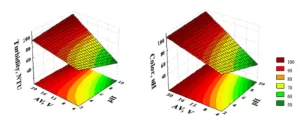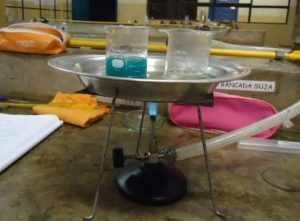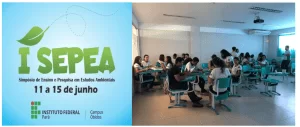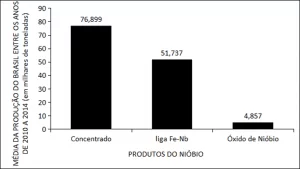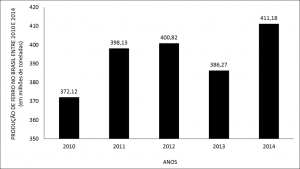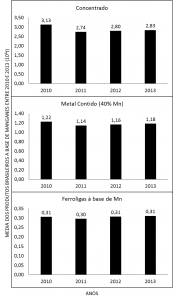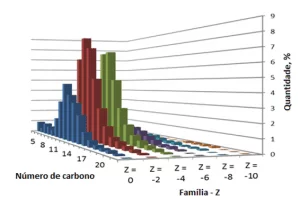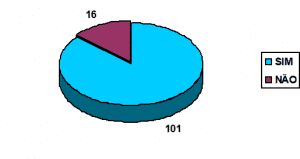FEIO, Stefanie Cecília Passinho [1], ARAÚJO, Franciolli da Silva Dantas [2], FECURY, Amanda Alves [3], OLIVEIRA, Euzébio [4], DENDASCK, Carla Viana [5], DIAS, Claudio Alberto Gellis de Mattos [6]
FEIO, Stefanie Cecília Passinho. Et al. National silver panorama between 2010 and 2014. Revista Científica Multidisciplinar Núcleo do Conhecimento. Year 03, Ed. 09, Vol. 08, pp. 38-46 September 2018. ISSN:2448-0959, Access link: https://www.nucleodoconhecimento.com.br/quimica-en/silver , DOI: 10.32749/nucleodoconhecimento.com.br/quimica-en/silver
SUMMARY
Having the name derived from the Latin word Argentun, silver (Ag) is a transition metal that has high electrical conduction and corrosion resistance. It is usually found aggregated with copper, zinc and gold minerals. Widely used in the manufacture of mirrors and coins, in dental processes such as silver amalgam, in the production of jewelry and cutlery, in photography and electronic devices due to its high electrical conductivity. This research aims to describe the data obtained in the mineral summaries of the National Department of Mineral Research (http://www.dnpm.gov.br), the bibliographic research was carried out in scientific articles, using computers from the computer laboratory of the Federal Institute of Education, Science and Technology of Amapá. When it comes to silver mining, Mexico is the country that stands out as a producer and Peru currently has the largest reserve in the world. Brazil has tiny reserves of silver mineral, its participation in the world production of this metal is almost negligible. In the country there have never been records of the extraction of silver as the main product, it is always found associated with other substances and ploughed as a by-product of their extraction. The national production takes place mostly in primary metals and to a lesser extent concentrated metal, because it is more expensive and requires more processing steps. The demand for silver is much higher than its production in the country, which makes import spending higher than those with exports. The most exported material is the primary good and the most imported is the semi-manufactured product. The domestic consumption of silver in the country is almost stable, with few variations. The sectors that consume the most silver are: coinage, the photographic industry, the jeweler’s sector and electronics. Its price has been experiencing a decline after a record increase in 2011 due to low industrial demand associated with large supply of the metal.
Keywords: Silver, Brazilian Production, Internal Consumption, Prices.
INTRODUCTION
Having the name derived from the Latin word Argentun, silver (Ag) is a chemical element that is located in group 11 of the periodic table, a transition metal that has high electrical conduction and corrosion resistance (SOUZA et al., 2013). It is usually found aggregated with copper, zinc and gold minerals. Being rarer to find in minerals where their predominance is higher, such as Acantita (AgưS) with a content of 87% silver and cerargirita (AgCl) with a content of 75% (BITTENCOURT et al., 2017; CPRM, 2017). Widely used in the manufacture of mirrors and coins, in dental processes such as silver amalgam, in the production of jewelry and cutlery and in photography, it is also widely used in electronic devices due to its high electrical conductivity. Its use is dated from 5000 to.C. (SOUZA et al., 2013; CPRM, 2017).
Silver is a chemical element that constitutes minerals, the same are substances formed in the earth’s crust through varied physical-chemical processes that differ from each other, in properties such as color, hardness, cleavage, brightness. They are obtained through mining that is considered as an expensive activity and difficult to accomplish, it can be conceptualized as the act of extracting minerals of interest and that have economic value, from the earth’s crust (BRANCO, 2017). Generally these minerals are found in mineral reserves that are part of an already discovered resource whose extraction is economically viable (CURI, 2009).
This ore can be extracted and processed with various materials as products, such as the silver concentrate which is the material that in its composition contains only silver with a minimum amount of impurities (BRASIL, 2014).
Its products can be classified into: primary goods corresponding to the silver ore itself and its concentrates that can generate semi-manufactured objects, represented by silver in its raw form, in bars, in wires and in sheets or manufactured products that are objects made of silver or silver foil, such as cutlery, jewelry, jars, coins and etc.(DNPM , 2014). There are also silver chemical compounds such as silver nitrate, medicines such as silver vitelinate and silver amalgam (SOUZA et al., 2013; BRASIL, 2014).
There is also the classification of its types of metal. Are called primary silver metal all materials that are obtained from the processing of it. Secondary metal is obtained by recycling processes of new or old scrap (BRASIL, 2011).
Goal
Quantitatively describe the data obtained in the mineral summaries of the National Department of Mineral Research from 2010 to 2014.
Method
The data were taken from summaries present on the website of the National Department of Mineral Research – DNPM (http://www.dnpm.gov.br), to access them are followed by the following steps: on the home page in the side tab “collection” clickon “publications”, then select “Statistical Series and Mineral Economy”. On the next page you will click on “Mineral Summaries”. The Brazilian Mineral Summaries used were those from 2010 to 2014. From the summaries were taken data on “World Reserves”, “World Production”, “Brazil Production”, “Brazil Import”, “Export of Brazil”, “Apparent Consumption of Brazil” and “Prices”. All data correspond from 2010 to 2014. The data was compiled within the Excel application, a component of the Microsoft Corporation Office suite. The bibliographic research was carried out in scientific articles, using computers from the computer laboratory of the Federal Institute of Education, Science and Technology of Amapá, Macapá Campus, located at: Rodovia BR 210 KM 3, s/n – Bairro Brasil Novo. ZIP Code: 68.909-398, Macapá, Amapá, Brazil.
Results
Figure 1 shows the average of the world silver reserves in the period 2010 to 2014. We can see that Peru is the country with the highest average followed by Poland and Brazil is the country with the lowest average. Figure 2 shows the average world silver production from 2010 to 2014. Mexico has the highest average silver production and Brazil has the lowest.
Figure 1: Average world silver reserves per country from 2010 to 2014.
Figure 2: Average world silver production per country from 2010 to 2014
Figure 3 shows silver production in Brazil from 2010 to 2014. Among the three products, the primary metal has the highest production and the concentrated product is the smallest.
Figure 3: Brazilian silver production from 2010 to 2014.
Figure 4 shows the import of silver in Brazil from 2010 to 2014. Among the three, semi-manufactured products are the most imported in Brazil while chemical compounds are less. Figure 5 shows the export of silver in Brazil from 2010 to 2014. In it we can observe that the export of silver is much higher as a primary and lower in other products such as semi-manufactured, manufactured and chemical compounds.
Figure 4: Silver imports in Brazil from 2010 to 2014.
Figure 5: Silver exports in Brazil from 2010 to 2014.
Figure 6 shows the consumption of silver in Brazil from 2010 to 2014. It is observed that consumption remains almost constant, showing little variation and with a higher growth in 2014 and a fall in 2012.
Figure 6: Consumption of silver apparent in Brazil from 2010 to 2014.
Figure 7 shows the price of silver from 2010 to 2014. The price of silver showed few fluctuations where in 2011 it increased and after that year showed falls.
Figure 7: Silver price in Brazil from 2010 to 2014.
Discussion
In Brazil there are few silver reserves, usually it is associated with other minerals and is always mined/mined as a by-product (BRASIL, 2014). According to old studies (FIRME and PINHO, 1975) it was possible to find silver with a good content and in good quantity associated with lead and gold in the states of Paraná, São Paulo and Minas Gerais. In 2013, the lavrable reserves of silver ore contained in Brazil totaled almost 4000 tons and Brazil’s silver reserves correspond in the world ranking of 0.7% of the total reserves (BRASIL, 2014).
Mexico is the country that has the most history when it comes to silver, records date back to the extraction there began since before the 17th century and to this day it stands out a lot in the field of silver mining (DABÈNE, 2003). There are three major companies responsible for silver mining, Fresnillo Plc seen as the world’s largest silver producer, Peñoles Industries, S.A.B. of C.V. owners of one of the largest silver mines in the world and the Canadian company that mines silver in Mexico and also in Peru Pan American Silver Corp (KLAPWIJK et al., 2012).
Because it is never the main interest of companies and always be mined/mined as a by-product of other ores it is almost unfeasible to create a base just to benefit silver, so that companies only aim to separate it from the product that really has interest to them (Lead, Copper, Gold, etc.). making the production of concentrated material, which requires more processing steps due to the degree of purity, small, and the production of the primary metal is higher (CPRM, 2017).
According to the data presented in figures 5 and 6, Brazil exports a much larger amount of material than it imports in tons. We have to take into view that the exported material has a lower market price than the imported product due to the fact that it is not a totally pure material. Silver is exported as raw alloy, where its purity is not so high and on average the content is 2%, it is also exported in the form of wires, plates and bars, but in very small quantities (BRASIL, 2011; 2013; 2014; 2017).
According to the literature, in the current Brazilian market the demand for silver is much higher than the domestic production of this product (CPRM, 2017), causing the import of various semi-manufactured and manufactured products, since the Brazilian industries are not sufficient in the supply of demand.
The main silver consumer sectors are: coinage industries, photographic and radiographic industries, jeweler and electronics. In 2012 there was a 4.8% drop in the consumption of this metal being leveraged by an increase of 4.6% in 2013 and 16.4% in 2014 (BRASIL, 2013; 2014).
In 2011 the price price of silver recorded a record increase in price, but after that the price of silver only decreased in the market. The decline in the price of silver from 2012 was due to low industrial demand and the large supply of this metal, as large investors decided to make large sales of their silver stocks at settled prices attracting bargain hunters which caused the price to continue to decline (KLAPWIJK et al., 2012; O’CONNELL et al., 2014)
CONCLUSION
When it comes to silver mining, Mexico is the country that stands out as a producer and Peru currently has the largest reserve in the world. Brazil has tiny reserves of silver mineral, its participation in the world production of this metal is almost negligible. In the country there have never been records of the extraction of silver as the main product, it is always found associated with other substances and ploughed as a by-product of their extraction. The national production takes place mostly in primary metals and to a lesser extent concentrated metal, because it is more expensive and requires more processing steps. The demand for silver is much higher than its production in the country, which makes import spending higher than those with exports. The most exported material is the primary good and the most imported is the semi-manufactured product. The domestic consumption of silver in the country is almost stable, with few variations. The sectors that consume the most silver are: coinage, the photographic industry, the jeweler’s sector and electronics. Its price has been experiencing a decline after a record increase in 2011 due to low industrial demand associated with large supply of the metal.
REFERENCES
BITTENCOURT, A. et al. PRATA, BRONZE, ESTANHO CARACTERÍSTICAS E APLICAÇÕES NA ENGENHARIA ELÉTRICA. 2017. Disponível em: < https://www.eecis.udel.edu/~portnoi/academic/academic-files/estanho-prata-bronze.html >. Acesso em: 21 de novembro, 2017.
BRANCO, P. Dicionário de Mineralogia. 2017. Disponível em: < http://www.dnpm-pe.gov.br/Detalhes/Mineral.htm >. Acesso em: 27 de novembro, 2017.
BRASIL. Sumário Mineral. Brasília: Departamento Nacional de Produção Mineral DNPM 2011.
______. Sumário Mineral. Brasília: Departamento Nacional de Produção Mineral DNPM 2013.
______. Sumário Mineral. Brasília: Departamento Nacional de Produção Mineral DNPM 2014.
______. Sumário Mineral. Brasília: Departamento Nacional de Produção Mineral DNPM 2017.
CPRM. Metais Preciosos. 2017. Disponível em: < http://www.cprm.gov.br/publique/Redes-Institucionais/Rede-de-Bibliotecas—Rede-Ametista/Canal-Escola/Metais-Preciosos-1041.html >. Acesso em: 21 de novembro, 2017.
CURI, A. Minas a céu aberto: Planejamento de lavra. São Paulo: Oficina de Textos, 2009. 232p. Disponível em: < http://www.dnpm-pe.gov.br/Geologia/Mineracao.php >.
DABÈNE, O. América Latina no Século XX. Porto Alegre: Edipucrs, 2003. 328 p.
FIRME, E. F.; PINHO, C. C. C. Prata: Estudo da economia mineral. 1975. Disponível em: < http://rigeo.cprm.gov.br/jspui/bitstream/doc/13823/1/Prata%2C%20estudo%20de%20economia%20mineral.pdf >. Acesso em: 18 de dezembro, 2017.
KLAPWIJK, P. et al. World Silver Survey 2012. London UK: GFMS Thomson Reuters 2012. ISBN 978-1-880936-20-7. Disponível em: < https://www.silverinstitute.org/wp-content/uploads/2017/10/2012WorldSilverSurvey.pdf >.
O’CONNELL, R. et al. World Silver Survey 2014. London UK: GFMS Thomson Reuters 2014. ISBN 978-1-880936-23-8. Disponível em: < https://www.silverinstitute.org/wp-content/uploads/2017/10/2014WorldSilverSurvey.pdf >.
SOUZA, G. et al. Prata: Breve histórico, propriedades e aplicações. Educ. quím, v. 24, n. 1, p. 14-16, 2013.
[1] High school student. Technical Course in Mining. Federal Institute of Basic, Technical and Technological Education of Amapá (IFAP).
[2] Materials Technologist. Master in Materials Science and Engineering. Researcher Professor, Federal Institute of Basic, Technical and Technological Education of Amapá (IFAP)
[3]
Biomedical. PhD in Tropical Diseases. Researcher Professor, Federal University of Amapá (UNIFAP).Biologist. Doctor of Tropical Diseases. Researcher Professor at the Federal University of Pará (UFPA).
[4] Biologist. Doctor of Tropical Diseases. Researcher Professor at the Federal University of Pará (UFPA).
[5] Theologian. PhD in Clinical Psychoanalysis. Researcher at the Center for Research and Advanced Studies, São Paulo, SP.
[6] Biologist. PhD in Theory and Behavior Research. Researcher Professor, Federal Institute of Basic, Technical and Technological Education of Amapá (IFAP)








